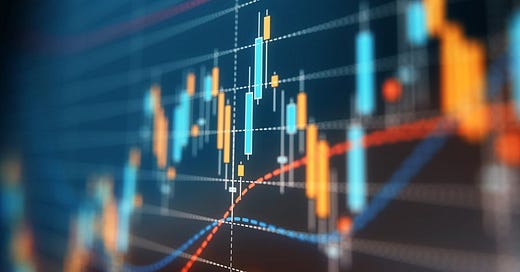The Kangaroo Kick: How My First AUD/USD Trade Taught Me Respect for the Market
Tough Lessons From the Past
I still remember sitting at my desk in 2015, heart pounding, mouse hovering over the Buy button like it was a detonator. It was a Tuesday afternoon, and I had just convinced myself that the Australian dollar was ready to bounce against the greenback. I had no real strategy—just a gut feeling and a few hours of reading trading forums. Spoiler alert: the market kicked back harder than I expected.
This is the story of my first FX trade, the lessons it punched into me, and why AUD/USD will always hold a place in my trading memory.
Why AUD/USD? The Setup That Hooked Me
I still remember it like a vivid dream—nervous energy, caffeine jitters, and the feeling that I was on the verge of something big. I had just discovered forex trading, and the AUD/USD pair seemed like a friendly gateway into this 24-hour financial battlefield. After a few hours of scrolling through candlestick charts and thinking I had "spotted a pattern," I clicked Buy on my first FX trade. It felt like power. Within minutes, it felt like panic.
My logic (if you can call it that) was simple. The Australian dollar had been falling for a few sessions. I figured it had gone "too far" and was due for a bounce. I didn’t care much for the economic data coming out of Australia or the U.S., and I hadn’t even heard of things like interest rate differentials or central bank tone. But the chart looked “low,” and the RSI looked “oversold.” That was it. My entire trade thesis.
I thought I had discovered a golden opportunity. In reality, I had stumbled into a high-volatility currency pair without a plan, much less a parachute.
I entered a small long position on AUD/USD at around 0.7550. I had no stop-loss, no profit target, and zero understanding of leverage. Every pip moved like a punch to the gut. I kept refreshing my trading app, watching the unrealized P&L dance up and down.
At first, the price nudged up a bit. I felt invincible.
Then it dropped—fast. And kept going.
In under an hour, I had lost more than I expected. I closed the trade in a panic. I told myself I’d “come back with a better plan.” But the truth was, I had just paid tuition to the market.
Looking back, there were so many red flags:
No trading plan: I had no idea why the price should go up—only that it looked like it had fallen “enough.”
No stop-loss: Rookie mistake. I thought I’d just “watch it closely.” Classic.
Misuse of indicators: I saw RSI was under 30 and assumed that meant the price had to bounce.
Leverage ignorance: I was trading with 100:1 leverage and didn’t understand how dangerous that was.
The worst part? I wasn't just losing money—I was losing confidence. That trade shook me.
Mistakes Were Made
Strangely enough, I’m grateful for that first trade. It slapped me awake.
It taught me:
That the market doesn’t care about my feelings.
That indicators aren’t magic; they need context.
That risk management is everything.
That emotional discipline matters more than flashy setups.
It set me on a path to become more systematic, to build strategies I could backtest, and to treat trading as a craft—not a casino.
If I could talk to that version of myself—hovering over the mouse, full of excitement and clueless optimism—I’d say:
"Slow down. Learn before you leap. Respect the market, because it doesn’t owe you anything."
I’d also say: "Take the loss, but take the lesson, too."
Your first trade might not be your worst one—but it’s often the most memorable. Mine was a wake-up call wrapped in a kangaroo kick from the Aussie dollar. It stung, sure, but it also marked the beginning of a long, obsessive, rewarding journey into trading.
Every week, I analyze positioning, sentiment, and market structure. Curious what hedge funds, retail, and smart money are doing each week? Then join hundreds of readers here in the Weekly Market Sentiment Report 📜 and stay ahead of the game through chart forecasts, sentiment analysis, volatility diagnosis, and seasonality charts.
Free trial available🆓





